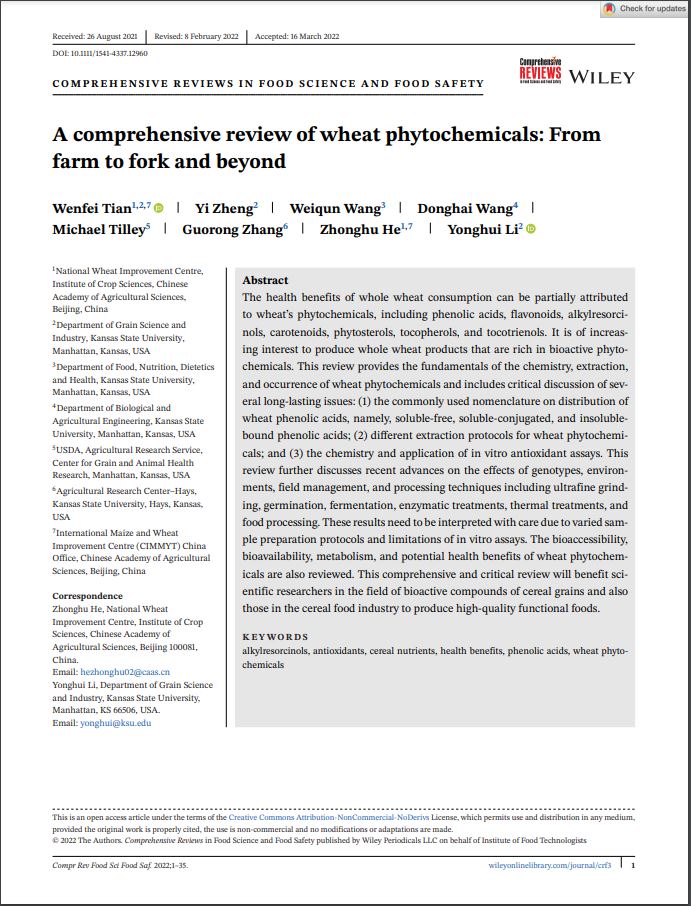The health benefits of whole wheat consumption can be partially attributed to wheat’s phytochemicals, including phenolic acids, flavonoids, alkylresorcinols, carotenoids, phytosterols, tocopherols, and tocotrienols. It is of increasing interest to produce whole wheat products that are rich in bioactive phytochemicals. This review provides the fundamentals of the chemistry, extraction, and occurrence of wheat phytochemicals and includes critical discussion of several long-lasting issues: (1) the commonly used nomenclature on distribution of wheat phenolic acids, namely, soluble-free, soluble-conjugated, and insoluble-bound phenolic acids; (2) different extraction protocols for wheat phytochemicals; and (3) the chemistry and application of in vitro antioxidant assays. This review further discusses recent advances on the effects of genotypes, environments, field management, and processing techniques including ultrafine grinding, germination, fermentation, enzymatic treatments, thermal treatments, and food processing. These results need to be interpreted with care due to varied sample preparation protocols and limitations of in vitro assays. The bioaccessibility, bioavailability, metabolism, and potential health benefits of wheat phytochemicals are also reviewed. This comprehensive and critical review will benefit scientific researchers in the field of bioactive compounds of cereal grains and also those in the cereal food industry to produce high-quality functional foods.

